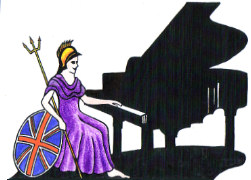Teachers, Accompanists and Piano Entertainers in the UK

UK Piano Page

1a Vale Road
Crosby, Merseyside
England
Beautiful Pianos for Beautiful Music At the Piano
81 Myddleton Rd
London
Bounds Green, London N22 8NE
England
Piano specialists offering new, used and
946-950 Blackpool Rd
Lea
Preston, Lancashire PR2 1XN
England
A&C Hamilton Musical Instruments is Located in
Upton Cottage
Plantation Farm
Blandford Forum, Dorset DT11 8BZ
England
Steinway restorations and retailers of pre loved
Ambrose House
20, Chapel Brow
Preston, Lancashire PR5 2NE
England
Music Festival for performers and guests Our 10th
18-06-2022 01:30PM
The Morecambe Bay Piano Group was set up to extend
11-12-2021 02:00PM
The Morecambe Bay Piano Group was set up to extend
08-01-2022 02:00PM
The Morecambe Bay Piano Group was set up to extend
12-02-2022 02:00PM